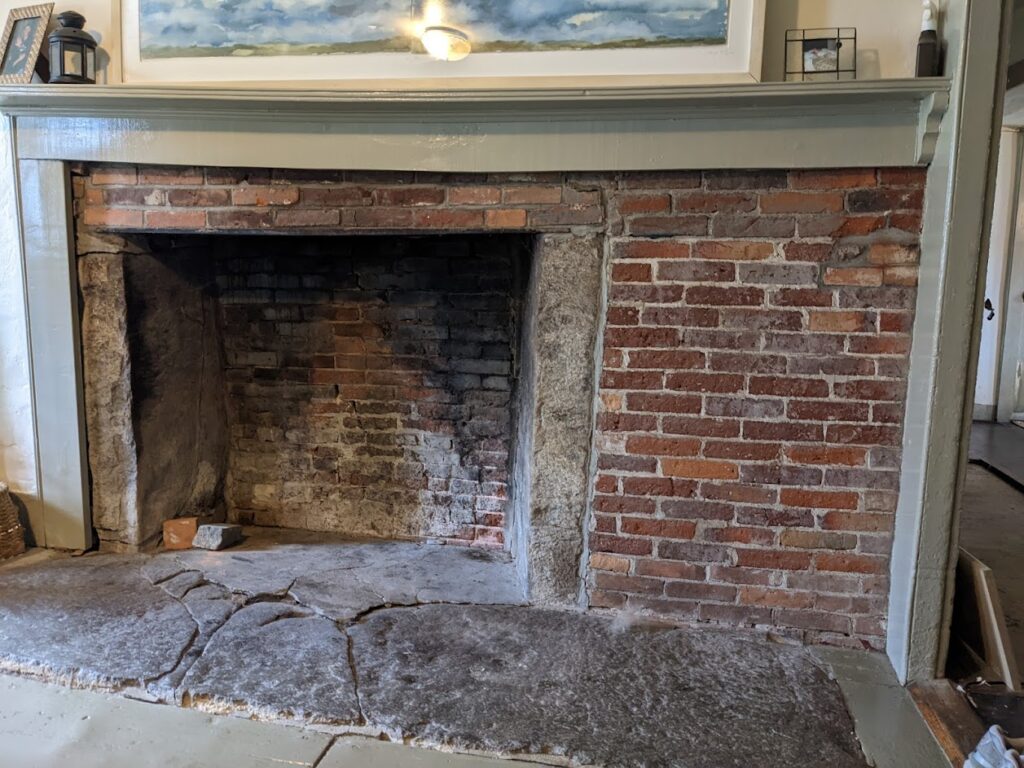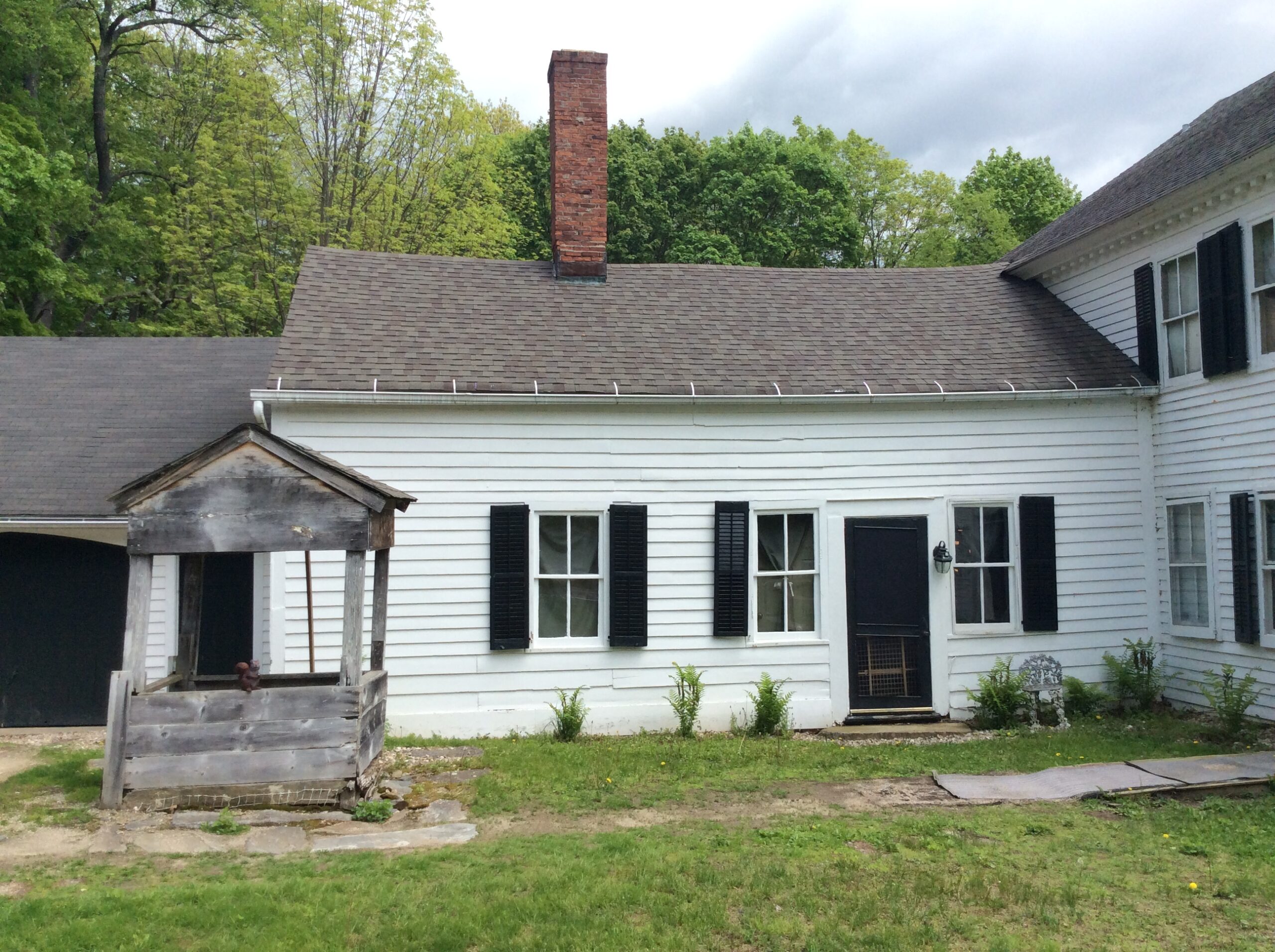The Joshua Whitney House, c. 1755
This Old Norfolk House
By Joseph Kelly
Whitney is a storied family name in America. Think Eli Whitney and his cotton gin or the Connecticut company Pratt & Whitney. In worlds as diverse as art, aviation, film, finance, journalism, linguistics, politics and women’s rights, Whitneys have played prominent roles including, as it turns out, right here in Norfolk.
Joshua Whitney, a great-grandson of the first Whitney to arrive in America, was a Norfolk proprietor, the first justice of the peace and the first town clerk. The house he built that stands today at the foot of North Street (Greenwoods Road) across from Memorial Green is one of Norfolk’s oldest, and of even more significance, was the location of Norfolk’s very first town meeting.
Norfolk was wilderness back then, rocky and densely wooded. To promote settlement, the colonial government (as it had done throughout New England) provided land rights at favorable rates to proprietors who promised to help build roads, fences, mills, forges, raise the meeting house and recruit a preacher. Joshua’s father, David Whitney, had relocated his family from Plainfield to Canaan in order to become a proprietor there. When Norfolk’s land rights became available in 1754, 36-year-old Joshua followed in his father’s footsteps, secured property near the Blackberry River and built a simple frame home for his wife, Amy Blodgett, and their growing family.
Step inside that home today and you will find much evidence of its centuries-old lineage: massive wood beams, some with the bark still on them, held together by hand-hewn mortise and tenon joinery and ceilings at seven feet (if that) above wide plank flooring. The entire interior is encased in what appears to be lime-based plaster mixed with horsehair—lime makes plaster cure faster, while horsehair reduces cracking.

The three primary rooms each have shallow fireplaces with primitive, rusticated brick surrounds and stone slab hearthstones rubbed smooth by centuries of use. One has a front-facing beehive oven, an innovation common in colonial times but less used once cast-iron stoves became affordable.
Whitney built the house sometime in 1755 or 1756—the precise date is in question. What is without question is that on the morning of Dec. 12, 1758, he welcomed 43 other male voters to his home to take part in what would be Norfolk’s first official town meeting. The attendees chose various town officers, including Whitney himself as town clerk.
While helping to manage the affairs of the nascent township, Whitney stayed busy as a proprietor, serving on numerous committees, acquiring a share in the sawmill and securing what would have been the highly lucrative honor of building and operating Norfolk’s first grist mill. But then he vanishes from the scene, never to be heard from again.
According to Theron W. Crissey, the primary compiler of Norfolk’s early history, it was a case of “financial embarrassment.” While many proprietors in Norfolk and other New England towns became wealthy, failure was also common and that appears to have been Whitney’s fate. He sold his rights to operate Norfolk’s grist mill, was on the losing side of a dispute over the town’s iron forge and may have been the victim of a fraudulent scheme involving counterfeit bills of credit.
In the end, Whitney left Norfolk and returned to his birthplace in Plainfield, where he died in 1761 at age 43, possibly of smallpox, leaving his widow and seven children, five under the age of 12.
If Whitney’s brief tenure and abrupt departure are indicative of the perilous life of an early settler, the fate of his house shows how those fortunes can turn. After Whitney left, the property was owned by one or another of the Pettibones, arguably the dominant family of early Norfolk. In the early 1800s, Josiah Pettibone added the two-story structure that adjoins the Whitney house.
As the Greenwoods Road (later, the toll-collecting Greenwoods Turnpike) evolved into a major thoroughfare, the combined Whitney-Pettibone estate became a popular stagecoach stop that for years was operated as a hotel by Major James Shepard and then his son. Evidence remains inside of a possible ticket booth and interior passageway to the stagecoach. Eventually, the property became a private residence again, home to the Canfields and later the Quinlans, among others. Today it’s owned by Sally Carr and Larry Hannafin, who operate it as a rental property.
While Joshua Whitney had a very short-lived presence here, that was decidedly not the case of his widow Amy Blodgett. After Joshua passed, she married Isaac Lawrence, who built the Lawrence Tavern in Canaan, still standing today on Route 7 just south of Route 44. After his death, she married George Palmer, builder of the still well-preserved 18th-century Palmer House on Locust Hill in West Norfolk, whose story was told in the Dec. 2021 Norfolk Now.
Amy Blodgett died in 1819 at age 96 and is buried in East Canaan’s Hillside Cemetery, just a short stagecoach ride away from the town that she and her husband helped get started and where her home as a young mother surviving on the edge of the American colonial wilderness still stands.
This is the fourth in a series of articles on 18th-century Norfolk houses. To date, close to 50 have been identified, spread over Norfolk’s 46.4 square miles.

